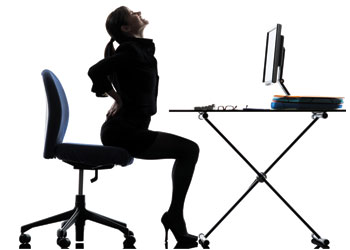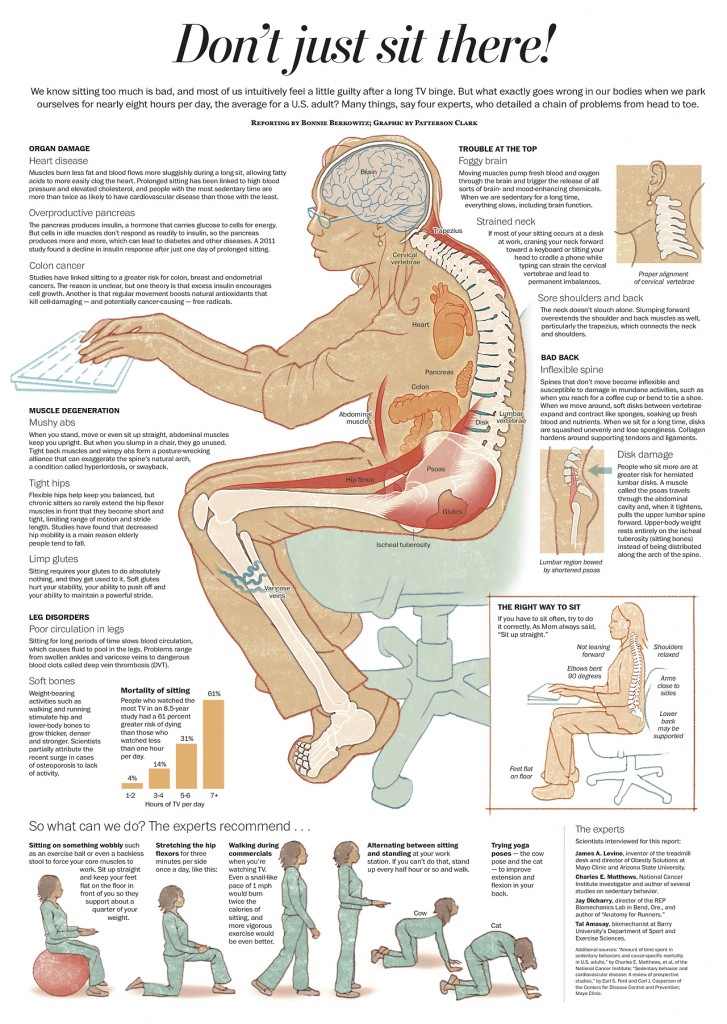 Most of us already know sitting is bad for our health, but how many of us actually know that sitting is deadly? No, I’m not exaggerating; this is what four experts say in the report presented below.
Most of us already know sitting is bad for our health, but how many of us actually know that sitting is deadly? No, I’m not exaggerating; this is what four experts say in the report presented below.
We all know that prolonged sitting causes obesity and disrupts metabolic function -anyone trying to lose weight is aware of this-, and that’s why more people every day are adopting a healthier lifestyle, including exercise in their daily schedule.
Nonetheless, research shows that even if we engage in regular exercise, it’s not enough to neutralise the consequences of too much sitting during the rest of the day.
According to a study by Dr. Hidde van der Ploeg, a senior research fellow at the University of Sydney’s School of Public Health, sitting for 11 or more hours per day increased risk of death by 40 percent, regardless of other activity levels (Van Der Ploeg, Hidde P. (2012). “Sitting Time and All-Cause Mortality Risk in 222 497 Australian Adults”. Archives of Internal Medicine, 172(6), 494-500. doi:10.1001/archinternmed.2011.2174).
Considering that most of us work in an office, we spend 8-10 hours on a chair in front of our desk. If you add the time we spend sitting in non-working hours, such as in our car stuck in traffic, having lunch or dinner -especially in a restaurant with clients or friends and family where we tend to spend more time due to discussions and socialisation-, and of course, when we’re back home after a long day sitting on the couch watching TV seems such a nice and relaxing idea! OK, did I just counted at least 12 hours sitting daily? According to the experts, we are slowly killing ourselves.
In the infographic below, published in The Washington Post Health & Science, you’ll find a report about all the health issues researchers have linked with sitting for long periods of time and why they claim that sitting is deadly.
Therefore, apart from exercising we need to cut down the hours we spend sitting. We should spend less time in front of the TV, go for a walk instead of sitting on the couch, go on foot to the closest convenient store instead of taking the car; there are plenty of ideas! But what about work?
Considering the nature of our jobs, that’s easier said than done. We have to change our working habits and incorporate more activity.
It is important to note here that standing is not panacea. Prolonged standing has its own risks as it can lead to “the development of musculoskeletal disorders, especially in the legs, knees and lower back. While you can stand for as long as it feels comfortable, most experts recommend a 50:50 sit-stand ratio” (as stated in Men’s Health, “Best Stand-up Desks“).
In the report below the interviewed experts suggest a few things we can do to eliminate the dangerous effects of sitting in our health and change our working practices. Apart from that, here are some other things you could try:
- Stand up while you are on the phone.
That way you can walk around your office every time you are taking calls.
- Implement active meetings.
Have you seen how Hugh Laurie as Dr House in the famous TV series ‘House MD’ conducts meetings with his team? Walking on the corridors of the hospital, or in the elevator while going to see a patient. Although we are not all famous doctors that everyone needs urgently, using his way and implementing walking meetings will be truly beneficial for our health. Not to mention that by moving small meetings from the conference room to the concourse will boost creativity.
.
“The health hazards of sitting”
Reporting by Bonnie Berkowitz, Graphic by: Patterson Clark
The experts | Scientists interviewed for this report:
James A. Levine, inventor of the treadmill desk and director of Obesity Solutions at Mayo Clinic and Arizona State University.
Charles E. Matthews, National Cancer Institute investigator and author of several studies on sedentary behaviour.
Jay Dicharry, director of the REP Biomechanics Lab in Bend, Ore., and author of “Anatomy for Runners.”
Tal Amasay, biomechanist at Barry University’s Department of Sport and Exercise Sciences


